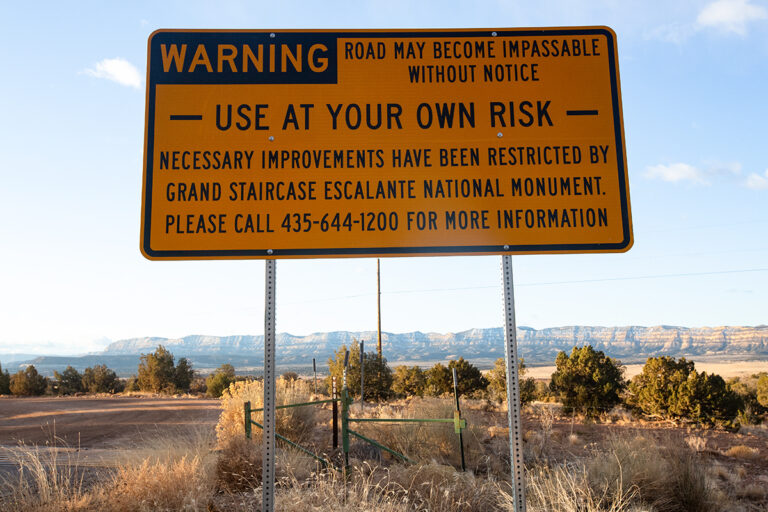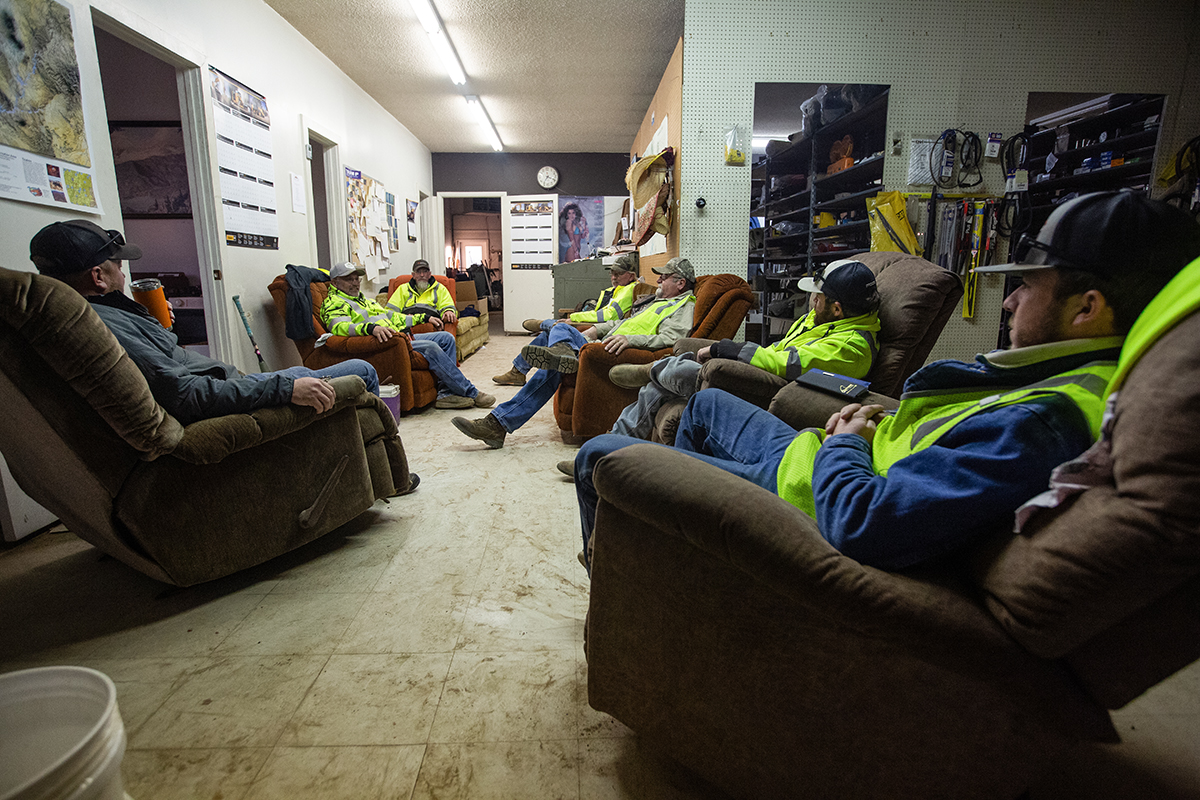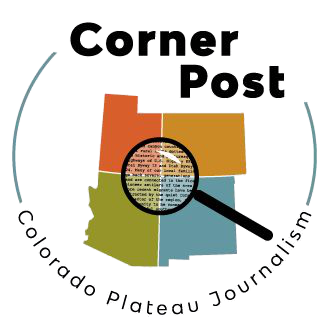
In-Depth
Travel at Your Own Risk
BLM and Garfield County continue sparring match over Hole-in-the-Rock Road


by Ian Marynowski – 07.03.2024 – 15 min. read
Last summer, a new symbol highlighting the longstanding roads dispute between Garfield County and the Bureau of Land Management sprouted at the entrance to Hole-in-the-Rock Road (HITR), east of Escalante, Utah. A four-foot by eight-foot reflective yellow sign warns HITR travelers to “Use at Your Own Risk,” further stating, “Necessary improvements have been restricted by Grand Staircase Escalante National Monument.” A phone number—with no additional clue as to whom one is calling—is provided for anyone seeking more information. It leads to the BLM’s Paria River District, home of the national monument’s headquarters.
The sign, erected by Garfield County, is emblematic of the county’s irritation at straining its budget to maintain a road claimed by the federal government, primarily for the benefit of tourists drawn to the national monument.
“The tourists are coming out here regardless of the road conditions,” said David Dodds, Garfield County Public Works Director. “We see everything from Chrysler minivans to convertible Mustangs out there, vehicles that generally have no business being down dirt roads. We feel obligated to maintain the road to safe standards because of this.”
Originally a wagon route plowed and blasted through sandstone by Latter-day Saint colonists in 1879, the 55-mile-long Hole-in-the-Rock Road has become famous for the stunning landscapes it passes through and the increasingly popular sites it provides access to. It is now also notorious for its bone—and vehicle—jarring washboards and potholes.
In the 1980s, locals say, the route required just a handful of road-grader passes each year to keep it drivable for the handful of ranchers that used it. A steady increase in traffic since the early 90s has accelerated sharply in recent years, straining the dirt road and driving up maintenance costs and time. Now county crews must make about 20 annual grader trips to keep it passable, scraping the road’s surface smooth so many times that it now lies several feet below grade in places, leading a former county engineer to observe that it resembles a luge run more than a road.
Dodds says the county spends as much as $200,000 annually to maintain the 17 miles of Hole-in-the-Rock Road within its borders. The state covers roughly $48,000 of that cost, leaving the county to pick up the rest.
Garfield County proposes rebuilding the road and paving the heaviest trafficked portions. Federal guidelines suggest paving routes with more than 400 vehicles per day, and automated BLM counters show Hole-in-the-Rock Road can receive upwards of 400 vehicle passes per day, and Garfield County’s automated count shows that number approaching 600 during the peak season. The feds have allowed the county to chip-seal routes with less traffic—such as the Burr Trail and East Fork roads—saving them time and money.
But what may seem simple is fraught with political and legal complications. While the BLM has jurisdiction over the route, the county has petitioned the courts to gain control of it using a 19th century mining law provision known as RS-2477, which gives local governments control over historic roads across public lands. The county is wary of doing anything that may harm that claim.
In May 2022, Dodds asked the BLM to acknowledge Garfield County’s RS-2477 right-of-way and applied for a permit to chip seal the first five miles of Hole-in-the-Rock. The BLM rejected the RS-2477 request but encouraged the county to instead apply for a right-of-way under Title V of the Federal Land Policy Management Act, after which they could evaluate proposed improvements. The county declined to do this for fear of losing the edge on their RS-2477 title case.
Meanwhile, environmental groups oppose the paving plan, saying it would undermine the backcountry and wilderness qualities the national monument designation was intended to protect, and claim it is an attempt by county officials to undermine federal authority.

On a chilly spring morning, a convoy of diesel-powered trucks and four-wheel-drive vehicles pull up to the Escalante Road Shed. Inside, the men charged with taking care of the county’s hundreds of miles of roads plop down in lounge chairs surrounded by maps, calendars and vintage posters of swimsuit models. As is often the case, they talk about their persistent headache: Hole-in-the-Rock Road.
“[Have you] seen all those culverts on the side of the road? Those cost us $50,000. Last time we replaced them they were only $25,000,” said Jay Brooks, foreman of the Escalante Road Shed, when asked about the costs of maintaining Hole-in-the-Rock Road. Brooks says he ventures down the road at least twice a month to fix problems, more than double what he was doing 15 years ago. During the busy season, new washboards can form less than a week after being graded smooth. “One of those graders costs more than half a million dollars, and over $200 an hour to run. People don’t understand how expensive it is to keep this road open.”
The county brings in about $2.3 million annually from its transient room tax, which is levied on lodging establishments and campgrounds. But statute requires that the money be spent on tourism promotion, search and rescues and emergency medical services—not road maintenance, even though tourism is taking the biggest toll on the roads.
Falyn Owens, executive director of the Garfield County Office of Tourism, said her office refrains from pointing visitors to the Hole-in-the-Rock Road because they don’t want unprepared people venturing down the rough route. “People don’t understand that a national monument is not a national park, there aren’t as many amenities and it is easier to get in trouble,” she said. “We want to see things accessible, but sometimes good access can get people places they shouldn’t be. Hole-in-the-Rock has a lot of safe things to see though and should have a safe road to get to them.”
To Dodds, safe means paved, at least for the first 17 miles of Hole-in-the-Rock, where traffic is heaviest. But that plan faces opposition from environmental groups, most notably the Southern Utah Wilderness Alliance, or SUWA, who worry it could open the door to more asphalt in the backcountry.
“If some portion of the road is improved, it won’t be long before people are clambering to improve more of it. This could spread beyond Hole-in-the-Rock to the smaller roads in the area.” said Steve Bloch, SUWA’s legal director. ”I don’t want to discount their concern for the public, but rights-of-way are what’s at the front of the brain. The county and state are just focused on perfecting RS rights-of-way.”
Bloch, who has been at SUWA since 1999, is a longtime veteran of the so-called ‘road wars of Utah. He was baffled at first by the sign on HITR Road, as it seemed as if the BLM and county were more or less on the same page about the route. “There should be a path forward.”
But, in 2017, the county and BLM found themselves at a similar impasse when the county proposed reengineering HITR—though not paving it—to the Kane county line. The BLM began processing the application and offered to match the county’s contribution to the project, bringing the budget to $1.7 million. But they ran into the same rights-of-way issues and the project was shelved.

“It feels like it is more philosophical—the county feels they shouldn’t have to ask for a Title V if they have an RS-2477,” continued Bloch. “They seem to think that perfecting their title will give them control over the landscape, but that is not how it works. It is still federal public land. Right-of-ways are subject to regulation by the servient estate (i.e. the BLM).”
In other Utah road disputes, county officials have protested federal management by holding motorized vehicle rallies on contested roads. Garfield County’s moves to assert “ownership” over Hole-in-the-Rock have been more subtle. In 2023, for example, a severe storm washed out a portion of the road. The BLM called the county and asked them to fix it, said Brooks. “But we can’t just drop what we were doing. So we put up a sign that the road was closed and got to it when we could.” The resulting closure of the popular byway not only inconvenienced travelers, it also made the BLM look bad.
The BLM has invited stakeholders on several field visits aimed at finding a solution to the Hole-in-the-Rock Road, including Dodds, Bloch and representatives from Grand Staircase Escalante Partners, a local nonprofit. Recently, the ragtag group caravanned down the road, stopping to inspect areas of concern, such as culverts that wash out during heavy rains or the “luge-run” segments of road that collect water and become mud bogs.
“These can feel like challenging times in Garfield County, so the chance to just sit down and have lunch together during one of these visits is great,” Bloch said, adding that they are “really just an opportunity to get together, be adults and try to work things out.”
“We really don’t like working with [SUWA], but at least we can both agree that we want the road to stay. They just want to keep it dirt, which is something [that] we can’t afford,” said Dodds.
So far the field visits haven’t yielded any lasting solutions. Yet they have brought together historically at-odds parties, perhaps heeding a federal judge’s call for conflicting factions of the road wars to lay down their arms and communicate. “It shouldn’t be that hard to do,” Senior District Judge Bruce Jenkins wrote in 2000 after Garfield County stirred up controversy by paving a segment of the Burr Trail.
Surprisingly, the Biden administration’s 2021 restoration of Grand Staircase-Escalante National Monument’s original boundaries may clear the way for paving the Hole-in-the-Rock Road. The BLM released its draft management plan for the national monument last summer and will finalize it soon. The new plan would designate the first five miles of Hole-in-the-Rock as ‘front country,’ and the rest as a ‘passage zone’, which allows for paving and other improvements to accommodate higher levels of visitation.
“We do appreciate how things are changing at the BLM,” said Dodds, even though the county is currently suing the Biden administration to block its restoration of the national monument. He said the county urged the agency to open the door to the improvements, and it appears it listened.
SUWA’s Bloch, however, notes that the plan “contemplates changing the nature of Hole- in-the-Rock. The context of the monument is really that it is a remote and rugged place. There are lots of very rough, four-wheel-drive roads in Utah. The fact that Hole-in-the-Rock is rough, washboarded or washed out is really unremarkable. Rough roads, like Hole-in-the-Rock, are what visitors should expect when they come to the monument.”
*A previous version of the story stated that Steve Bloch has been at SUWA since 1985. He has been there since 1999. It also stated that the number on the Hole-in-the-Rock sign leads to the Kanab Field Office. It leads to the office of the Paria River District, which is where the Kanab Field Office is located. The earlier version also stated that automated BLM counters show 600 cars travel the Hole-in-the-Rock Road each day on average. Automated BLM counters show Hole-in-the-Rock Road can receive upwards of 400 vehicle passes per day, and it is Garfield County’s automated count that shows that number approaching 600 during the peak season.
Republish
Republish Our Content
Corner Post's work is available under a Creative Commons License and under our guidelines:
- You are free to republish the text of this article both online and in print (Please note that images are not included in this blanket licence as in most cases we are not the copyright owner) but:
- you can’t edit our material, except to reflect relative changes in time, location and editorial style and ensure that you attribute the author, their institute, and mention that the article was originally published on Corner Post;
- if you’re republishing online, you have to link to us and include all of the links in the story;
- you can’t sell our material separately;
- it’s fine to put our stories on pages with ads, but not ads specifically sold against our stories;
- you can’t republish our material wholesale or automatically—you need to select stories to be republished individually;
- you have to credit us, ideally in the byline; we prefer “Author Name, Corner Post,” with a link to our homepage or the article; and
- you have to tag our work with an editor’s note, as in “This article was paid for, developed, and originally published by Corner Post. Corner Post is an independent, nonprofit news organization. See cornerpost.org for more.” Please, include a link to our site and our logo. Download our logo here.
 Originally from Denver, Colorado, Ian Marynowski settled into life on the Colorado Plateau nearly a decade ago and currently calls the small town of Escalante, Utah, home. Having studied journalism at the University of Montana, he has since worked as a bike mechanic, ski guide, avalanche educator, barista and Aquatics Inventory and Monitoring (AIM) technician for the Colorado Natural Heritage Program.
Originally from Denver, Colorado, Ian Marynowski settled into life on the Colorado Plateau nearly a decade ago and currently calls the small town of Escalante, Utah, home. Having studied journalism at the University of Montana, he has since worked as a bike mechanic, ski guide, avalanche educator, barista and Aquatics Inventory and Monitoring (AIM) technician for the Colorado Natural Heritage Program.





1 thought on “Travel at Your Own Risk”
How about you obtain the stats for the amount of $$$ that Garfield County obtains annually from both GSENM and the federal government-at-large for their road maintenance. I used to work at GSENM and know for a fact they get tens of thousands of federal dollars EVERY year for road maintenance. Let’s see ALL the facts please!!